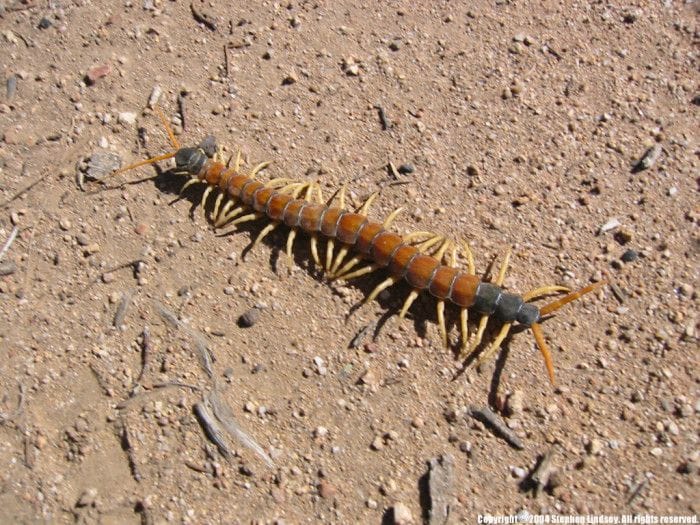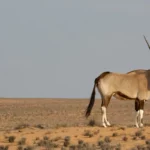Dive into the hidden world of desert bugs, where survival reigns supreme. In this article, we explore the incredible ways these creatures have adapted to thrive in the unforgiving desert landscapes. From beetles to ants and even tarantulas, each species likely has its own unique strategies for surviving extreme temperatures, water scarcity, and rugged terrain. Join us on a journey to uncover the unseen wonders of desert bugs, and marvel at their remarkable resilience and adaptability.
Desert Bugs: Tiny Survivors of a Sun-Baked World
When you think about deserts, images of scorching sun and endless sand dunes probably come to mind. It’s not exactly a place you’d expect to find a whole lot of life, right? But believe it or not, deserts are teeming with fascinating creatures, especially those little critters we call desert bugs. These tough guys and gals have figured out some seriously impressive ways to not just survive but actually thrive in one of the harshest environments on Earth.
Deserts in Africa are some of the most inhospitable places on earth, yet life persists.
Living Life on the Edge (of Heat!)
Let’s face it, deserts are not for the faint of heart. The heat alone is enough to make you sweat, and we’re not even talking about the dryness! So how do these little guys manage? Well, desert bugs have, over time, developed some pretty ingenious strategies to handle the extreme heat and dryness.
Think of it like this: they’ve become masters of adaptation, kind of like how you might wear light clothes and drink plenty of water in the desert on a hot summer day. Here are some of their coolest tricks:
Beating the Heat:
- Night Owls: Many desert bugs are like little vampires, coming out to party when the sun goes down. This probably helps them avoid the most intense heat of the day.
- Water Wise: We all know water is precious in the desert. These bugs have evolved ways to conserve every drop, even excreting uric acid instead of urine because, hey, every little bit counts!
- Built-in Coolant: Some desert bugs may have developed bodies that are super heat-resistant. They may possess special enzymes and low metabolic rates that help them keep their cool even when the temperature soars.
- Shape Shifters: Okay, not really shape shifters, but their body shapes and sizes have evolved to help them survive. Smaller bodies mean less water loss, and some have larger surface areas to radiate that desert heat away.
More Than Just Bugs
You might be thinking, “Okay, so they’re tough. But what good are they?” Well, desert bugs actually play a super important role in keeping the whole desert ecosystem running smoothly. They’re like tiny cogs in a big, complex machine.
- Dinner is Served: Lots of larger animals, like birds, reptiles, and even some mammals, depend on desert bugs for a tasty meal. Talk about being an important part of the food chain!
- Love is in the Air: Did you know that these little creatures are important pollinators? Just like bees and butterflies in other ecosystems, they help plants reproduce by carrying pollen from one flower to another.
- Nature’s Recyclers: Desert bugs are like nature’s clean-up crew. They help break down dead plants and animals, recycling nutrients back into the soil and keeping the desert ecosystem healthy. This is similar to the role abiotic animals in the desert play, interacting with the non-living components of the environment.
Facing the Future
Here’s the thing – even though desert bugs are tough, they’re facing some serious challenges these days.
- Habitat Loss: As humans expand into desert areas, we often destroy the habitats these bugs rely on. It’s like if someone came along and bulldozed your home. The California desert region facts highlight the diverse ecosystems within deserts that are increasingly threatened.
- Climate Change: The biggest challenge of all. Rising temperatures and changes in rainfall patterns are making an already tough environment even tougher for desert bugs.
- Pesticides: Pesticides used in agriculture can harm or even kill desert bugs, even if they are not the intended target.
Lending a Helping Hand
The good news is that there are things we can do to help protect these amazing creatures:
- Protect Their Homes: Creating protected areas and reserves in deserts can give desert bugs a safe haven.
- Fight Climate Change: This is a big one, but we can all do our part by reducing our carbon footprint and supporting policies that address climate change.
- Use Pesticides Wisely: Farmers and homeowners can help by reducing pesticide use and choosing eco-friendly options whenever possible.
The world of desert bugs is full of wonder, resilience, and important ecological roles. By learning more about these fascinating creatures and supporting efforts to protect them, we can help ensure that they continue to thrive in their harsh yet beautiful desert homes.
What Makes Desert Insects Unique?
Picking up from where we left off, let’s dive deeper into what makes desert insects so fascinating. We’re talking about creatures that have not only adapted to some of the harshest conditions on Earth, but have actually thrived in them. The abiotic components of desert environments, such as rocks, sand, and wind, play a significant role in shaping the adaptations of these insects.
Think about it: scorching sun, limited water, and temperatures that would make even the toughest of us wilt – yet these little guys just keep on truckin’! So how do they do it?
Well, for starters, they’ve become masters of disguise. Their camouflage isn’t just about blending in; it’s about becoming invisible. We’re talking colors and patterns that mimic sand, rocks, even the spiky spines of cacti! This clever trickery helps them avoid becoming someone’s lunch, and believe me, in the desert, everyone’s looking for their next meal.
And speaking of meals, how do these critters survive without a readily available water source? Their secret weapon? Their bodies! Over time, they’ve evolved ways to conserve every precious drop. Think waxy exoskeletons that lock in moisture, and some even get their water intake from the food they eat!
Another neat trick – they’ve adapted their schedules to avoid the worst of the heat. You see, many desert insects are crepuscular, meaning they’re most active during the cooler hours of twilight. Talk about strategic!
But there’s more to these desert dwellers than just survival skills; they’re also key players in their ecosystems. Just like bees and butterflies in your garden, desert insects are vital pollinators, ensuring the survival of plants and the delicate balance of the ecosystem, much like the diverse desert flora found in places like the Sonoran Desert.
And let’s not forget their role as nature’s clean-up crew. By breaking down organic matter, they kickstart the recycling process of nutrients, making sure the circle of life keeps on spinning. They contribute to the intricate web of life that exists even in the harshest environments.
The desert might seem like a harsh and unforgiving place, but it’s teeming with these tiny wonders. The more we learn about these resilient creatures, the more we uncover about the intricate and awe-inspiring web of life on Earth.
How Do Desert Bugs Survive the Extremes?
We’ve talked about how rough the desert can be, right? Scorching sun, barely any water, and finding a decent meal feels like winning the lottery. But somehow, bugs not only live there – they thrive! These little guys are masters of survival, showing us just how amazing evolution can be.
Think about how hot a desert gets. You wouldn’t last long without some serious shade and a giant water bottle! But desert bugs have some tricks up their sleeves. Some are masters of disguise, blending right into the sand or rocks. This camouflage doesn’t just hide them from predators, it actually helps them absorb less heat! Others have chosen the night shift. They sleep through the worst of the sun’s wrath and only come out when it’s cooler, making the most of the desert night.
Water, or the lack thereof, is another huge challenge. Every drop counts in the desert! Bugs, however, have found ways to stay cool without relying on a dip in a cool spring. Many of them are expert diggers, burrowing deep underground during the day where it’s cooler and the little bit of moisture left in the soil is like a five-star spa. Then, when the sun sets and the temperature drops, they emerge to do their thing. Some bugs have even evolved shiny, reflective exteriors, like tiny mirrors bouncing the sun’s rays right back. Pretty ingenious, right?
Now, let’s talk about food. Just like in any neighborhood, the desert has its share of diverse eaters. Some bugs, like certain ants, beetles, and wasps, are fierce predators, hunting down other smaller insects. Then you have the vegetarians, like caterpillars and grasshoppers, perfectly content munching on whatever plants they can find. And of course, no ecosystem would be complete without the clean-up crew! Scavengers like vultures (yes, big birds count!), beetles, and other resourceful creatures make sure nothing goes to waste, feasting on the remains of less fortunate animals.
It might seem like these bugs are just trying to get by, but they’re actually incredibly important for the whole desert ecosystem. Think about it: they pollinate plants, helping them reproduce. They spread seeds around, like little gardeners ensuring the next generation. And of course, they’re a vital food source for larger creatures, keeping the whole desert food chain going.
Studying how desert bugs thrive in such harsh conditions teaches us a lot about resilience and adaptation. These creatures are living proof that life finds a way, even in the most extreme environments. Scientists are constantly researching them, discovering even more incredible adaptations and learning new things about this delicate balance of life in the desert. Who knows what other amazing secrets these little survivors hold?
Exploring the Diversity of Desert Bugs
Desert bugs, they’re not just creepy crawlies that send shivers down your spine. They’re actually tiny champions of survival, masters of adaptation who’ve figured out how to thrive in some of the harshest conditions on Earth. Imagine scorching sun, bone-dry air, and barely a drop of water to be found – that’s their daily reality!
One of the biggest challenges for anything living in the desert is holding onto water. It’s like trying to grip a bar of soap in a bathtub! But desert bugs have some pretty ingenious tricks up their sleeves. Some have developed waxy coatings or a coat of fine, dense hairs on their bodies, acting like a personal raincoat to keep that precious moisture locked in. Others, like the Namib Desert beetle, have a body designed to collect water from fog, which is about as close to magic as it gets. And of course, many desert bugs are super tiny, which means less surface area for the sun to dry them out. Think of it like wearing a smaller shirt on a hot day – less fabric, less sweat!
And then there’s the matter of finding enough to eat in a landscape that often looks more like a barren moonscape than a buffet. Desert bugs have evolved a whole range of feeding strategies to tackle this challenge. Some, like grasshoppers and caterpillars, are dedicated vegetarians, munching on tough desert plants and succulents that offer both a meal and a much-needed sip of moisture. Others, like ants and certain beetles, have gone the carnivore route, becoming skilled hunters who stalk and devour other insects or even small animals. And then you have the clean-up crew, the detritivores. These resourceful bugs, like dung beetles and some species of flies, feast on the dead, recycling nutrients back into the ecosystem like nature’s own sanitation squad.
But surviving in the desert isn’t just about what you eat or how you stay hydrated – it’s about staying alive when everything around you wants to eat you. Desert bugs have evolved a whole arsenal of defenses to avoid becoming someone else’s lunch. Camouflage is a big one – blending in with the sand or rocks is practically an art form in the desert. Some sport spines or horns, making them a rather prickly snack.
And because the desert sun can be brutal, many desert bugs have adopted a nocturnal lifestyle, becoming creatures of the cool night. They emerge under the cover of darkness to forage for food and water, avoiding the scorching daytime temperatures. Some, like the tenebrionid beetle, can even pull water directly from the air through their skin – a superpower any desert dweller would envy!
But here’s the thing about desert bugs – they’re not just individual survivors, they’re vital threads in the intricate web of the desert ecosystem. Take pollination, for example. Without bees, moths, and even some types of flies flitting from flower to flower in search of nectar, many desert plants wouldn’t be able to reproduce. And those seemingly insignificant ants and beetles scurrying around? They play a crucial role in seed dispersal, helping plants spread and thrive. And of course, desert bugs themselves are a critical food source for a wide range of animals further up the food chain – lizards, birds, even some mammals rely on these crunchy snacks for sustenance.
So the next time you think about desert bugs, don’t just picture creepy crawlies – picture resilient survivors, ingenious engineers, and essential players in a delicate and fascinating ecosystem. They’re a testament to the sheer power of evolution, showcasing the remarkable diversity and adaptability of life on Earth, even in the most challenging environments.
- Old Mexico Map: Border Shifts 1821-1857 - April 19, 2025
- Blindness Doesn’t Limit: Popular Blind People’s Inspiring Success Stories - April 19, 2025
- Discover Famous Chinese People: A Deep Dive into History’s Impact - April 19, 2025
















